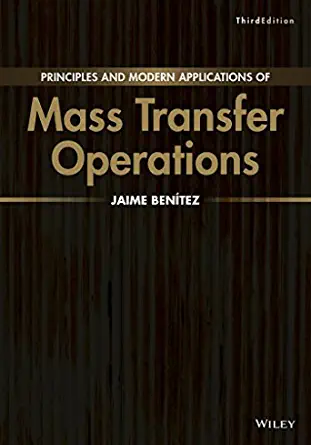Answered step by step
Verified Expert Solution
Question
1 Approved Answer
mass transfer 25.9 Consider the catalytic reaction process shown in the figure below. The control volume has two catalytic zones: a porous catalyst (catalyst I
mass transfer 
25.9 Consider the catalytic reaction process shown in the figure below. The control volume has two catalytic zones: a porous catalyst (catalyst I ) that fills the control volume, and a nonporous catalyst surface (catalyst II) on the left side of the control volume (x=0,y=0 to H ). Reactant A diffuses into the porous catalytic material (catalyst I ) with effective diffusion coefficient DAe and is converted to product B according to a homogeneous reaction of the form Ak1BwithRA=k1cA where k1 is the first-order reaction rate constant (s1). Reactant A can also diffuse to the nonporous catalyst surface (catalyst II), and is converted to product C according the surface reaction of the form Ak12CwithrA,x=k3cAs where kx is the first-order surface reaction rate constant (cm/s). The source for reactant A is well-mixed flowing fluid of constant concentration cA,. It is reasonable to assume that cA(x,0) cA,(0xL). Reactant A is diluted in inert carrier fluid D. Therefore, the control volume contains four species: A,B,C, and inert diluent D. The right side (x=L,y=0 to H) and top side (x=0 to L,y=H) of the catalytic zone are impermeable to reactant A, products B and C, and diluent fluid D 
Step by Step Solution
There are 3 Steps involved in it
Step: 1

Get Instant Access to Expert-Tailored Solutions
See step-by-step solutions with expert insights and AI powered tools for academic success
Step: 2

Step: 3

Ace Your Homework with AI
Get the answers you need in no time with our AI-driven, step-by-step assistance
Get Started


